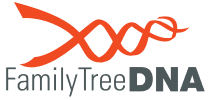What Is DNA Sequencing And Why Is It So Important?

Have you ever wondered how scientists are able to know which mutations in our genes can cause disease? DNA sequencing is largely responsible for our understanding of gene function. DNA sequencing refers to the process of discerning the four main chemical bases (adenine, guanine, cytosine, and thymine) that comprise a DNA molecule.
DNA sequencing is gaining more attention lately, not only within the research lab but also in the practical everyday application in life. With the help of DNA sequencing, patients who undergo genetic profiling might have the opportunity to receive more tailored and specific counseling for their treatments.
These four chemical bases are tasked with an important job. Each base tells a cell how to function and what type of cell it should become. DNA sequencing is responsible for these regulatory instructions. When studied, it can shed important light on the changes in a gene that might be responsible for causing disease.
The Importance
DNA sequencing is used by scientists and researchers today as an integral part of their research processes. By mapping out the human genome, researchers are moving closer to discovering important information about diseases that plague millions of people.
This method is a key part of determining variations and mutations within a specific genetic disease. Researchers and doctors use this information to more fully understand diseases and to help make a plan for treatment options.
Pharmacogenomics is another way through which researchers are exploring sequencing. Understanding how an individual’s genome variations might affect their response to a specific drug has become increasingly more prevalent. Thanks to this understanding, pharmacogenomics is making headway in matching patients with the right treatment for their specific makeup.
Pharmacogenomics helps doctors and patients understand appropriate dosage, side effects, and estimated success.
Looking closely at an individual’s genetic profile is being used more often to understand and prescribe therapies for a multitude of diseases. These include colon cancer, breast cancer, HIV, and so forth. Developers of drugs and medications are now working more closely with pharmacogenomics. This development has led to the real possibility of finding treatment for cancer, depression, cardiovascular disease, and so on.
Understanding a patient’s unique genetic profile can allow drug makers to target specific subgroups of individuals grouped together by similar genetic makeup. This can result in more exact and tailored information such as in the medication type itself down to the dosage level.
The History
In 1953, scientists made an important discovery. They were able to confirm that DNA had a double helix structure. At this point, however, scientists and researchers were incapable of degrading DNA, which is needed to perform a DNA sequence analysis.
Fast forward nearly 20 years to 1970. A biologist from Cornell University named Ray Wu successfully published one of the first methods for DNA sequencing.
Fred Sanger, from the Laboratory of Molecular Biology in Cambridge UK, then entered the scene with what would become known as the “Plus and Minus” system. Sanger’s technique enabled the DNA sequencing of up to 80 nucleotides at a time. In other words, his technique made it possible for longer pieces of DNA to be analyzed much more quickly.
By 1986, Leroy Hood, alongside his colleagues at the California Institute of Technology, came up with the first automated process of sequencing. Since the 1990s, advancements in science and technology have allowed for this method to rapidly develop since its more humble beginnings.
In a span of ten years, from 2001 to 2011, the cost of sequencing a specific genome was reduced from a whopping $100 million to $10,000. Technology and techniques used within the method are constantly evolving and being refined. In response to this, sequencing is experiencing more real-life applications and successes.
The Applications
Its applications are wide. As we know, it is used to plan, understand, and design drugs that can be targeted to specific disease-causing genes. Sequencing has also been used to help understand and propel the field of gene therapy. Gene therapy is a kind of treatment used to identify and replace defective genes within specific genetic disorders.






